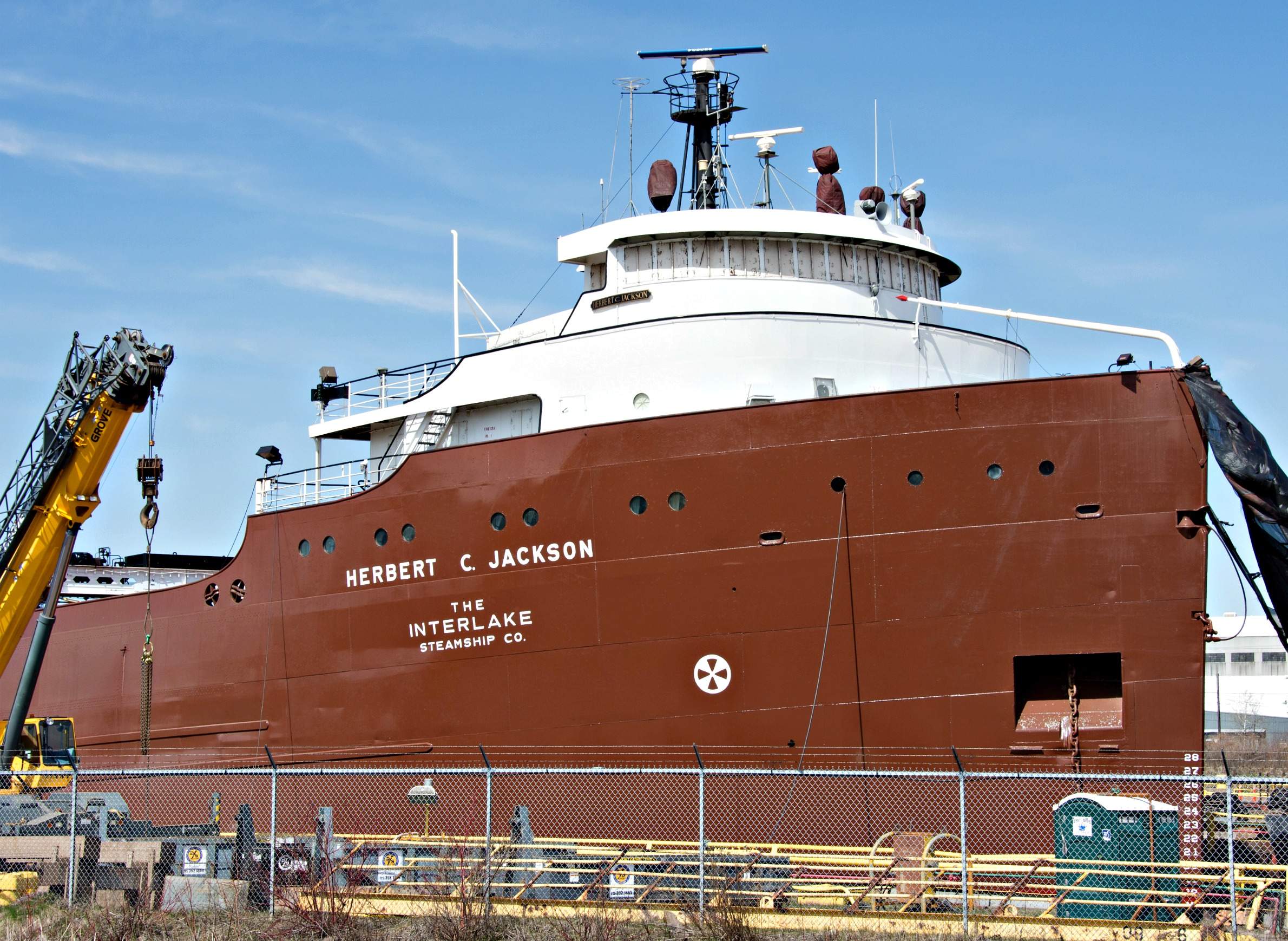
The Herbert C. Jackson being retrofitted at Fraser Shipyards in Superior.

The Herbert C. Jackson being retrofitted at Fraser Shipyards in Superior.
The majority of 233 workers tested for lead exposure at a Superior shipyard had elevated levels of lead in their blood, according to a report released Jan. 13 from Wisconsin and Minnesota health officials.
The Wisconsin and Minnesota health departments began a joint investigation in April 2016 after workers at Fraser Shipyards Inc. were exposed to lead while retrofitting the Herbert C. Jackson, originally built in 1959.
About 73 percent, or 171 workers, had blood lead poisoning, said Jon Mieman, chief medical officer and state epidemiologist for environmental and occupational health with the Wisconsin Department of Health Services.
"The good thing is, if this is an acute exposure – which it appears it was – protecting people and removing (people) from the environment and putting in proper workplace safety measures eventually that lead will naturally be removed from the body on its own," Mieman said. "There shouldn’t be any long-term health effects from that."
However, Mieman noted around 15 percent, or 35 workers, had high lead levels in their blood, around 40 to 60 times the average adult.
"You do see more acute short-term effects," Mieman said. "At those levels that we saw … they can vary quite a bit from person to person. But, typically, you’ll see anemia in terms of symptoms. They may have headache, fatigue, that sort of thing."
Mieman said it can be difficult to determine whether workers' blood lead levels were the result of short-term or long-term exposure at the shipyard or places of prior employment.
"We can’t say for sure, but we can say from what we know about the work environment, there was a clear connection between exposure to lead in a work environment and a significant group of workers that had elevated lead levels," he said.
Public health officials consider blood lead poisoning to take place when blood has lead levels higher than five micrograms per deciliter.
A spokesman for Fraser Shipyards declined to comment on the report’s findings.
The shipyard recently reached a settlement with the U.S. Occupational Health and Safety Administration. OSHA issued a $1.4 million fine to Fraser in August 2016 for exposing workers to lead. In a statement last week, Fraser didn't admit fault or liability in the case. James Farkas, president and chief executive of Fraser, said the shipyard would employ a new safety plan and pay a $700,000 fine.
Wisconsin Public Radio, © Copyright 2023, Board of Regents of the University of Wisconsin System and Wisconsin Educational Communications Board.